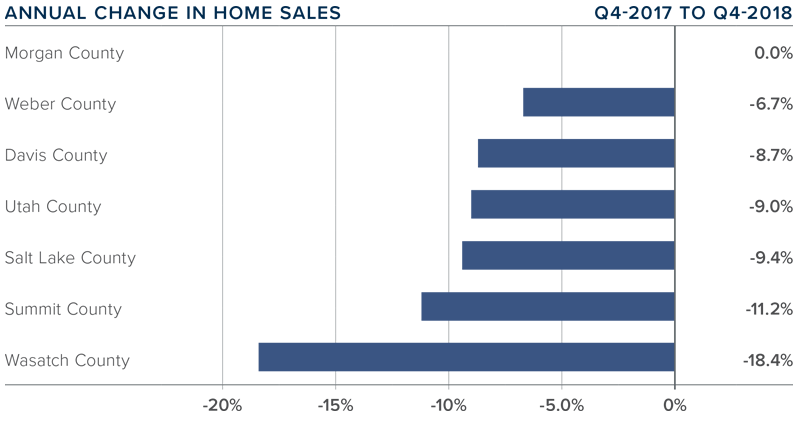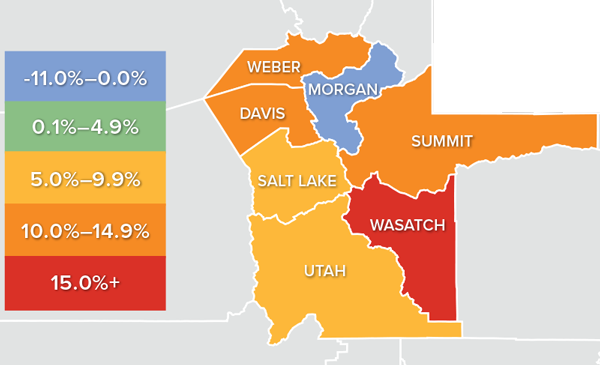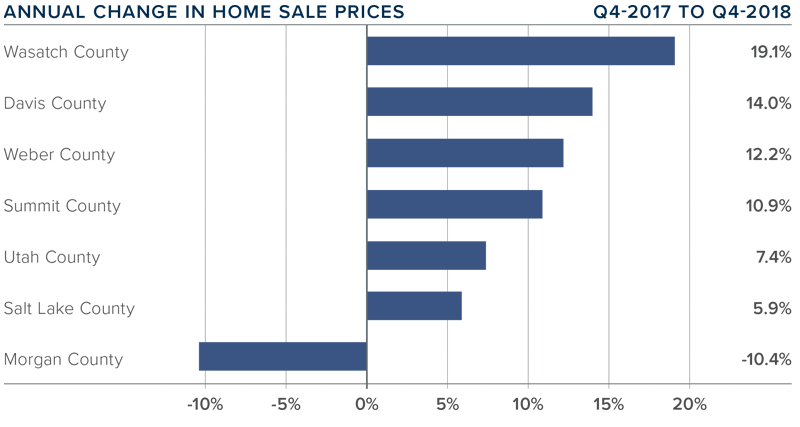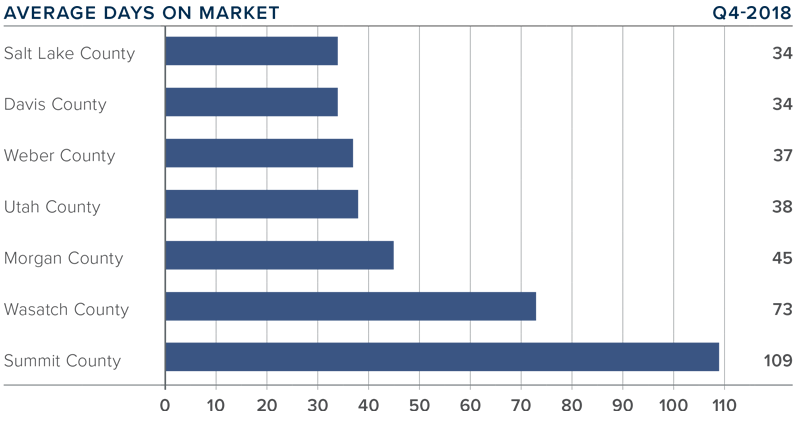The following analysis of select counties of the Utah real estate market is provided by Windermere Real Estate Chief Economist Matthew Gardner. We hope that this information may assist you with making better-informed real estate decisions. For further information about the housing market in your area, please don’t hesitate to contact your Windermere agent.
ECONOMIC OVERVIEW
Utah added 43,700 non-agricultural jobs over the past 12 months, representing a growth rate of 2.9%. For perspective, the U.S growth rate is 1.7%. Monthly employment growth in Utah has started to slow, but I attribute this to the fact that the region is essentially at full employment and it is typical to see job growth slow, especially at this stage of the business cycle. In November, the state unemployment rate was 3.2%, matching the level seen a year ago.
HOME SALES ACTIVITY
-
7,989 homes sold during the fourth quarter of 2018, representing a drop of 9.1% from the same period in 2017, and down 16.7% from the third quarter.
-
Total sales activity dropped in all counties contained in this report except Morgan County, which saw sales at the same level as a year ago.
-
The number of homes for sale in fourth quarter rose by a significant 16.1% compared to the same period a year ago. This increase in choice for buyers is likely the reason home sales slowed. As a result, buyers have more options and are taking their time when making the decision to buy a new home.
-
I think we’ll see the number of homes for sale rise in the spring, which should be a pleasant relief for buyers who are tired of the lack of choices.
-
A greater supply of listings will likely allow sales to grow in 2019.

HOME PRICES

-
The average home price in the region continued to rise in the fourth quarter, with a year-over-year increase of 8.1% to $368,885.
-
In addition to Wasatch County, three counties saw double-digit price increases when compared to a year ago. Home prices dropped in Morgan County but it’s important to remember that small counties are subject to significant swings in value.
-
Appreciation was strongest in Wasatch County, where prices rose by a substantial 19.1%. Although this sounds extreme, it is a very small market and subject to major swings.
-
The takeaway from this data is that home prices continue to grow at above-average rates but I believe we will see a trend toward the longer-term average as we move through 2019.

DAYS ON MARKET
-
The average number of days it took to sell a home in Utah rose three days compared to the final quarter of 2017.
-
Homes sold fastest in Davis and Salt Lake counties and slowest in Summit County. All counties, other than Salt Lake (-1), saw days-on- market rise when compared to the fourth quarter of 2017.
-
During the fourth quarter of this year, it took an average of 53 days to sell a home in the region.
-
The regional economy continues to perform very well, and this will continue to drive housing demand. That said, rising inventory levels will give buyers more choice and less urgency, which will lead to market time rising.

CONCLUSIONS

The speedometer reflects the state of the region’s real estate market using housing inventory, price gains, home sales, interest rates, and larger economic factors.
For the fourth quarter of 2018, I have moved the needle very slightly toward buyers, though it clearly remains a sellers’ market. 2019 is very likely to be another good year for home sellers, but I expect to see home-price growth start to moderate.

As Chief Economist for Windermere Real Estate, Matthew Gardner is responsible for analyzing and interpreting economic data and its impact on the real estate market on both a local and national level. Matthew has over 30 years of professional experience both in the U.S. and U.K.
In addition to his day-to-day responsibilities, Matthew sits on the Washington State Governor's Council of Economic Advisors; chairs the Board of Trustees at the Washington Center for Real Estate Research at the University of Washington; and is an Advisory Board Member at the Runstad Center for Real Estate Studies at the University of Washington where he also lectures in real estate economics.
 Facebook
Facebook
 X
X
 Pinterest
Pinterest
 Copy Link
Copy Link



